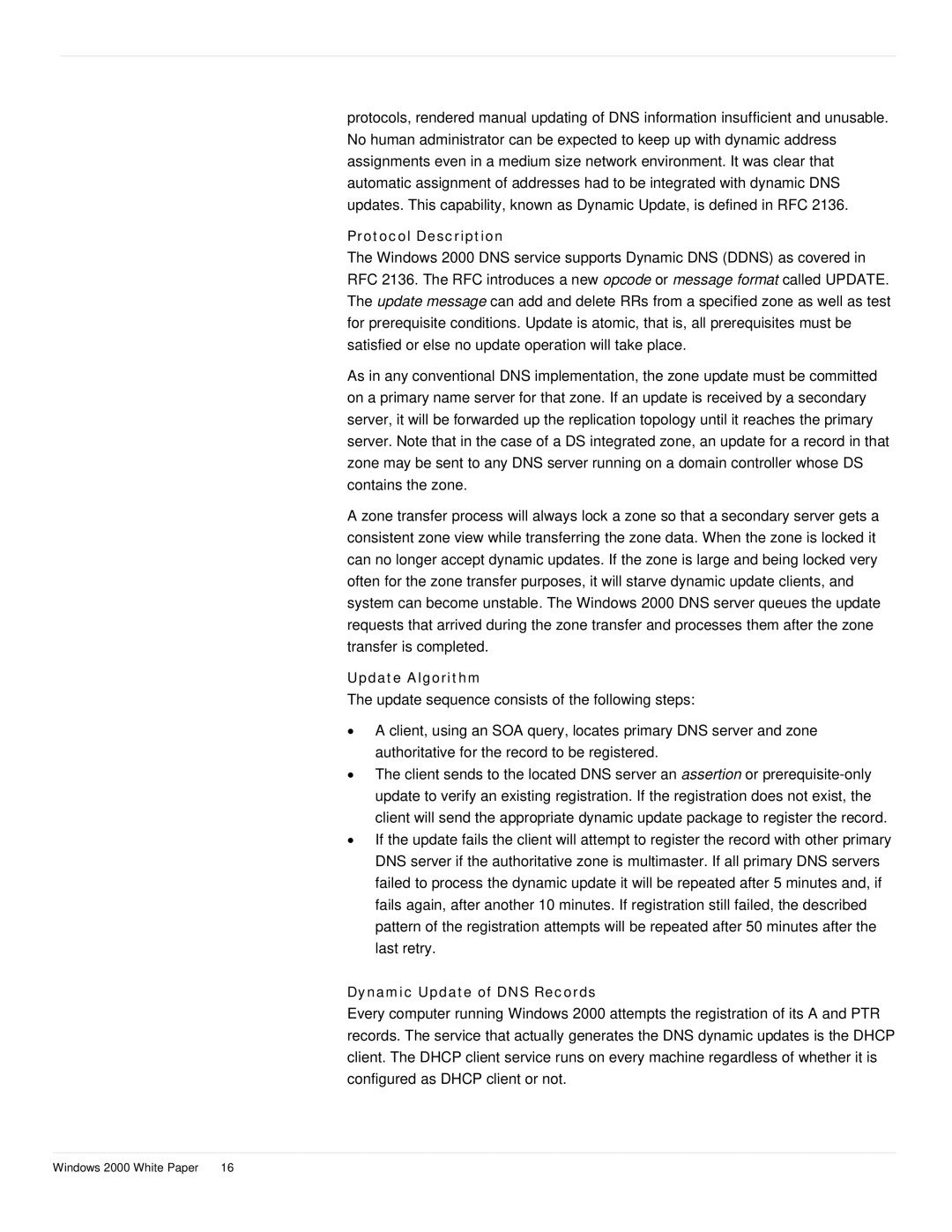
protocols, rendered manual updating of DNS information insufficient and unusable. No human administrator can be expected to keep up with dynamic address assignments even in a medium size network environment. It was clear that automatic assignment of addresses had to be integrated with dynamic DNS updates. This capability, known as Dynamic Update, is defined in RFC 2136.
Protocol Description
The Windows 2000 DNS service supports Dynamic DNS (DDNS) as covered in RFC 2136. The RFC introduces a new opcode or message format called UPDATE. The update message can add and delete RRs from a specified zone as well as test for prerequisite conditions. Update is atomic, that is, all prerequisites must be satisfied or else no update operation will take place.
As in any conventional DNS implementation, the zone update must be committed on a primary name server for that zone. If an update is received by a secondary server, it will be forwarded up the replication topology until it reaches the primary server. Note that in the case of a DS integrated zone, an update for a record in that zone may be sent to any DNS server running on a domain controller whose DS contains the zone.
A zone transfer process will always lock a zone so that a secondary server gets a consistent zone view while transferring the zone data. When the zone is locked it can no longer accept dynamic updates. If the zone is large and being locked very often for the zone transfer purposes, it will starve dynamic update clients, and system can become unstable. The Windows 2000 DNS server queues the update requests that arrived during the zone transfer and processes them after the zone transfer is completed.
Update Algorithm
The update sequence consists of the following steps:
•A client, using an SOA query, locates primary DNS server and zone authoritative for the record to be registered.
•The client sends to the located DNS server an assertion or
•If the update fails the client will attempt to register the record with other primary DNS server if the authoritative zone is multimaster. If all primary DNS servers failed to process the dynamic update it will be repeated after 5 minutes and, if fails again, after another 10 minutes. If registration still failed, the described pattern of the registration attempts will be repeated after 50 minutes after the last retry.
Dynamic Update of DNS Records
Every computer running Windows 2000 attempts the registration of its A and PTR records. The service that actually generates the DNS dynamic updates is the DHCP client. The DHCP client service runs on every machine regardless of whether it is configured as DHCP client or not.
Windows 2000 White Paper | 16 |
